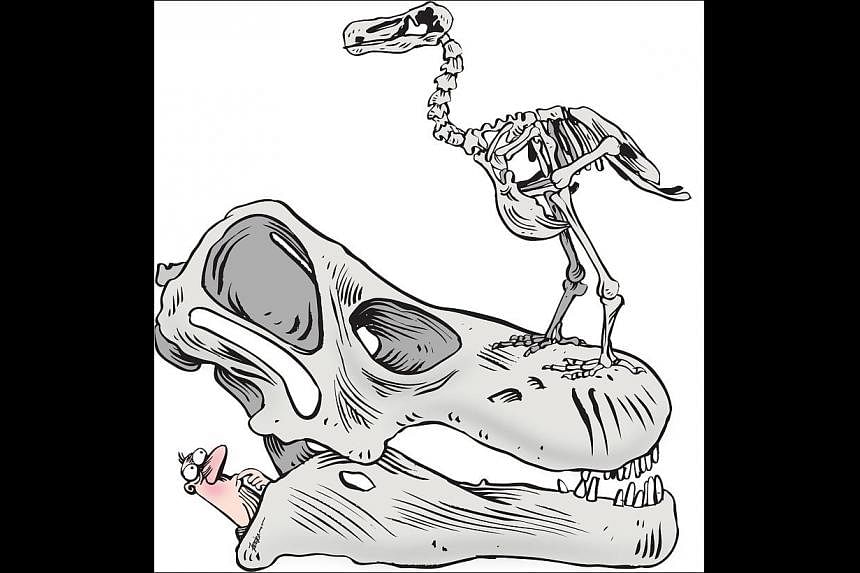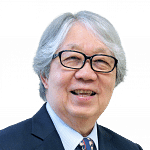On April 18, a new jewel was added to the cultural crown of Singapore.
The jewel is the Lee Kong Chian Natural History Museum (LKCNHM). It is a gift from the National University of Singapore (NUS) to the nation. The fact that it has taken place this year is doubly meaningful because Singapore is celebrating its 50th anniversary and NUS is celebrating the 110th anniversary of its founding.
One lesson we should learn from Mr Lee Kuan Yew is to love nature and to aspire to live in harmony with nature. Because of his vision and leadership, we have one of the greenest cities in the world. Singapore is also rich in biological diversity.
In recent years, the hornbill bird, the otter and the wild boar, which have been working abroad, have returned to our shores. In 2010, the United Nations named the City Biodiversity Index, the Singapore Index, in recognition of the leadership role that we have played in mobilising cities to act as custodians of the world's biodiversity.
Singapore lies at the heart of South-east Asia. Our region has the richest biodiversity in the world, both on land and at sea.
The seas of South-east Asia are home to 2,500 species of marine fish and 600 species of hard coral.
On land, we have a rich endowment of plant and animal species.
However, some of our charismatic species, such as the tiger, elephant, rhino, orang utan and sea turtle, are endangered. Some misguided people are eating the pangolin, the scaly ant-eater, to the brink of extinction. We have a duty to protect the biodiversity of our region and to slow down the pace at which it is being lost. The museum can help to disseminate this message to its visitors.
The new museum has a long history. In 1874, the Legislative Council of Singapore decided to establish a library and a museum and named them after Sir Stamford Raffles. In 1878, the Raffles Library and Museum became a legal entity.
A serious attempt to collect natural history specimens began in 1877. In 1887, the Raffles Library and Museum moved into its new home in Stamford Road, where the present National Museum is located.
The collection grew from strength to strength. It was divided into the exhibition collection and the reference collection. The collections survived the war and the Japanese Occupation.
However, in 1972, the Government decided to remove the natural history collections from the National Museum. The exhibition collection was given to the Science Centre. In 1974, the National Museum gave away its most iconic exhibit, a 12.8m-long skeleton of an Indian fin whale, to the National Museum of Malaysia. It is now displayed at the Labuan Maritime Museum.
The reference collection, also known as the Raffles Collection, was given to the zoology department of the then University of Singapore. It was treated like an unwanted orphan and was housed in various temporary premises with no climate control. There was even an attempt to divide it up. It spent seven years at Nanyang Technological University (NTU), before returning to NUS.
The collection was saved by the heroic efforts of a few individuals, notably Mrs Yang Chang Man, Professor Roland Sharma and Professor Lam Toong Jin from NUS and Mr Eric Alfred from the National Museum. President Tony Tan, when he was education minister, opened the Zoological Reference Collection in 1988. Deputy Prime Minister Teo Chee Hean, when he was education minister, opened the Raffles Museum of Biodiversity Research (RMBR) in 2001.
In 2004, I was the chairman of the National Heritage Board. After visiting RMBR that year, I wrote to the then president of NUS, Professor Shih Choon Fong, and proposed that NUS should build a museum of natural history to display its world-class collections of fauna and flora. Prof Shih and his successor, Prof Tan Chorh Chuan, were interested in the idea but had no money to build such a museum.
It took the combination of Prof Leo Tan and Prof Peter Ng, who raised $56 million, to turn my vision into reality. The remarkable story of Singapore's natural history museum has been told by Dr Kevin Tan, in his book Of Whales And Dinosaurs.
The LKCNHM has inherited the Raffles Collection, which consists of 566,500 lots of plankton, insects, crustaceans, fishes, shells, birds, mammals, amphibians, spiders, worms, reptiles, corals and sea stars. The museum's collection continues to grow because of research activities and now stands at a million specimens. New species are being discovered all the time. Selected specimens are beautifully displayed in the museum.
Leading showpieces
WHAT are the museum's star pieces? Without doubt, the biggest star attraction consists of three original dinosaur fossils. The diplodocid sauropods, which were herbivores, were found together at a quarry in Wyoming in the United States.
Another star piece is a small bird, an Asian brown flycatcher, which belonged to the collection of the great naturalist, Alfred Russel Wallace. Wallace and Charles Darwin had, independently of each other, simultaneously developed the theory of evolution. Unlike Darwin, Wallace spent several years in Singapore.
Also a top attraction is the cream-coloured giant squirrel (Ratufa affinis). Sir Stamford first described this species from Singapore in 1821. It was last sighted in 1995 and is feared to be extinct in Singapore.
The dodo bird has become an icon for extinction. There is a wonderful model at the museum, together with a set of genuine bones on loan from Oxford University. I hope that when visitors see this exhibit, they will pause for a moment to reflect on the unsustainable speed at which we are losing our biodiversity.
The museum will attract many visitors. It will share with its visitors the message to love nature and to conserve nature.
The museum will be used by students and scholars for study and research. It will also become a centre for intellectual exchange and for discourse on natural history. I hope that visitors will be inspired by the museum and its message.
The writer is the chairman of the Advisory Board of the Lee Kong Chian Natural History Museum.


